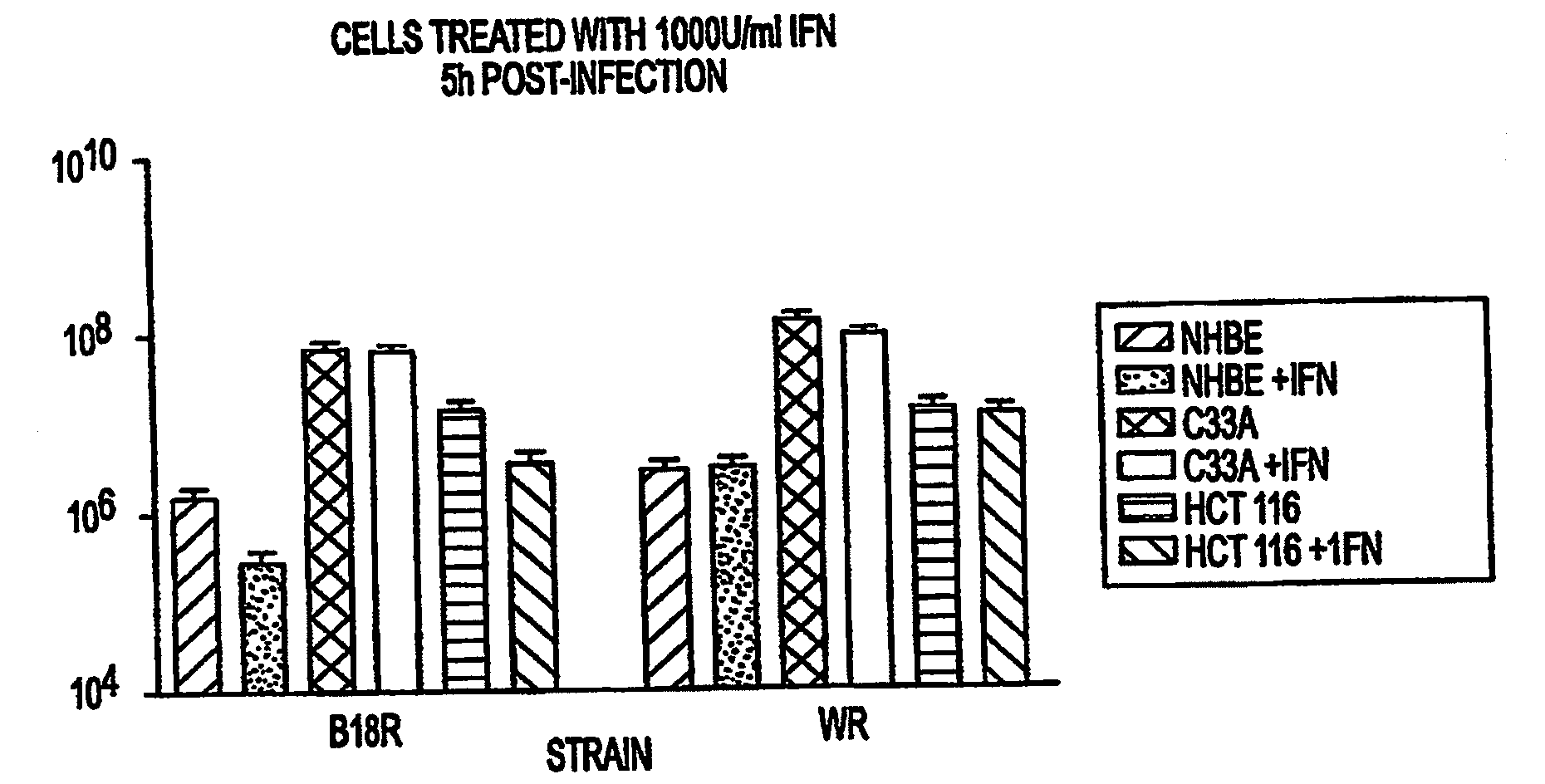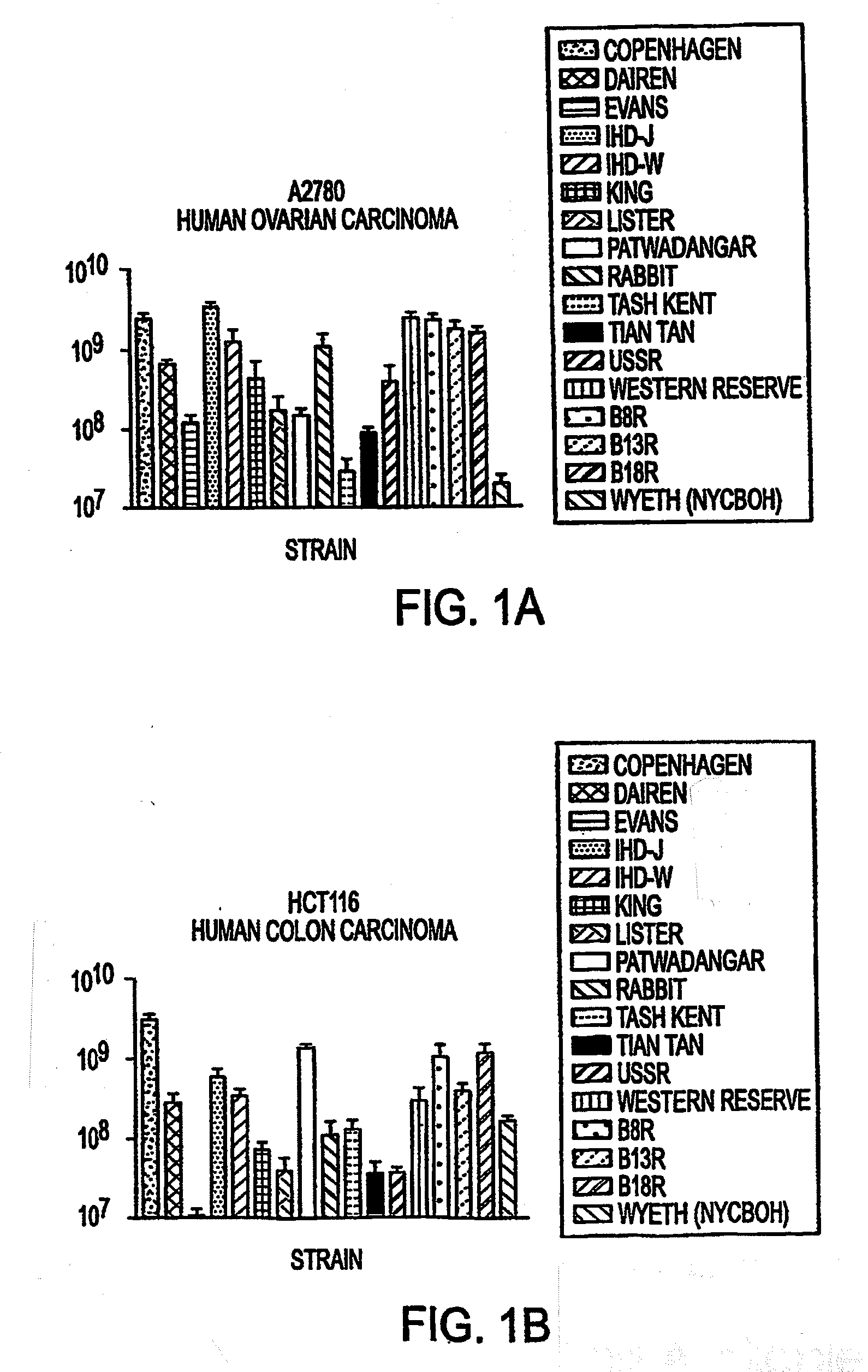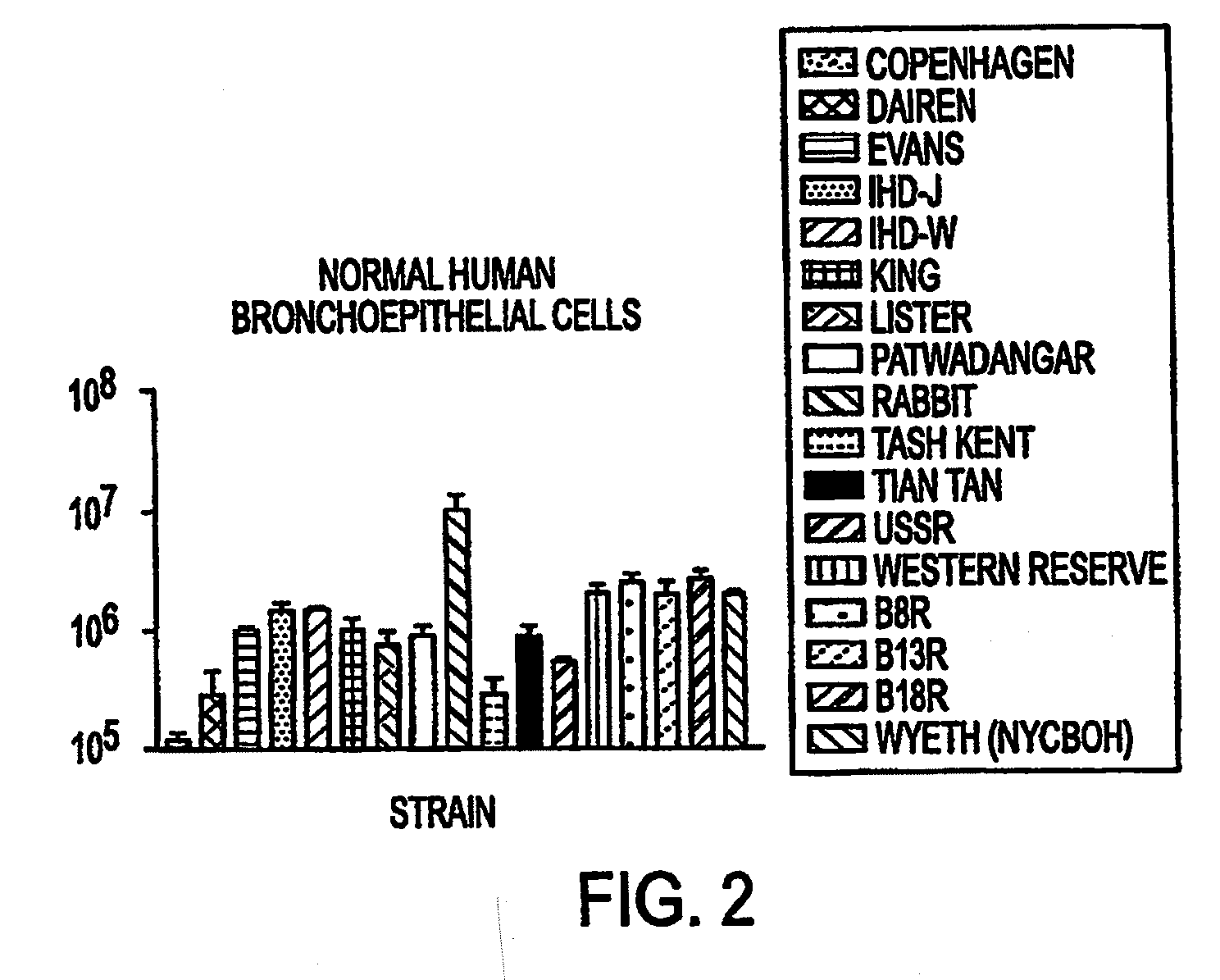Methods and Compositions Concerning Poxviruses and Cancer
a technology of poxvirus and cancer, applied in the field of poxviruses, can solve the problems of ineffective clearing of attenuated virus, reduced antiviral response, inability to counter, etc., and achieve the effect of increasing the antitumoral efficacy of attenuated vaccinia virus and increasing the antitumoral efficacy
- Summary
- Abstract
- Description
- Claims
- Application Information
AI Technical Summary
Benefits of technology
Problems solved by technology
Method used
Image
Examples
example 1
Vaccinia Virus Propagation in Cell Lines
[0356]A panel of 16 different routinely available vaccinia virus laboratory strains / available mutants (and rabbitpox, and other poxviruses) was evaluated: Copenhagen, Dairen, Evans, USSR, Tashkent, Tian Tan, WR, IHD-J, IED-W, Lister, NYCBOH, Patwadangar, King, and WR mutants B8R, B18R and B13R. Replication was assessed in both cancer cells and in normal cells. A preferred virus would have relatively high replication in the cancer cells and reduced replication in normal cells (i.e., a larger therapeutic ratio or index between tumor and normal cells). Two human tumor cell lines were tested: A2780 colon carcinoma and HCT116 colon carcinoma (American Type Culture Collection). Normal cells included normal human bronchial epithelial (NHBE) cells. For cytopathic effect assays using proliferating cells, cells were grown to 70% confluence (DMEM with 2% FBS) at which time cells were infected with multiplicities of infection (MOI) of 0.001 to 10. Five to...
example 2
Vaccinia Virus in Combination with Paclitaxel
[0358]Although viruses such as adenovirus and HSV have been tested in combination with chemotherapy, vaccinia viruses have not (including the Copenhagen strain). VV has been engineered to express prodrug-activating enzymes (e.g. thymide kinase) have been tested in combination with relatively non-toxic prodrugs that become toxic following activation by the prodrug-activating gene product (Puhlmann et al., 2000).
[0359]Synergy between standard cytotoxic chemotherapeutics that are approved for the treatment of cancer patients and Vaccinia viruses would be an favorable feature for a poxvirus, including vaccinia and specifically Copenhagen strain. Paclitaxel (a.k.a taxol) is approved for use in cancer patients in the U.S. and Europe. VV Copenhagen were tested in combination with Taxol in both HCT116 and LNCaP cancer cell lines. Isobologram generation and analysis has shown synergy of VV in combination with Taxol (FIG. 5). Isobolograms were gene...
example 3
Tumor Regression Results from Vaccinia Virus Administration
[0361]Subcutaneous murine tumor xenografts were formed by injecting 5×105 CMT-64 cells or 106 CMT-93 cells (murine rectal carcinoma) suspended in 100 μl PBS subcutaneously into the flanks of C57B / 6 mice. In the first experiment, VV WR strain mutants in B8R and B18R were; injected into subcutaneous CMT-93 tumors (estimated baseline tumor sizes 40-100 μl) in the flanks of immunocompetent C57 / B6 mice at doses of 104 to 108 particles suspended in 40 μl per day on days 1, 3 and 5. A single needle puncture was made in the center of the tumor and four needle tracts were made out into each tumor quadrant. Approximately one-fourth of the solution was injected into each tract as the needle was being withdrawn. Controls received identical treatment with psoralen-UV inactivated virus or PBS. Bidimensional tumor measurements were performed biweekly and the tumor volume established by the following formula: (length)(width)(width)(3.14 / 6)....
PUM
| Property | Measurement | Unit |
|---|---|---|
| time | aaaaa | aaaaa |
| temperatures | aaaaa | aaaaa |
| temperatures | aaaaa | aaaaa |
Abstract
Description
Claims
Application Information
 Login to View More
Login to View More - R&D
- Intellectual Property
- Life Sciences
- Materials
- Tech Scout
- Unparalleled Data Quality
- Higher Quality Content
- 60% Fewer Hallucinations
Browse by: Latest US Patents, China's latest patents, Technical Efficacy Thesaurus, Application Domain, Technology Topic, Popular Technical Reports.
© 2025 PatSnap. All rights reserved.Legal|Privacy policy|Modern Slavery Act Transparency Statement|Sitemap|About US| Contact US: help@patsnap.com



